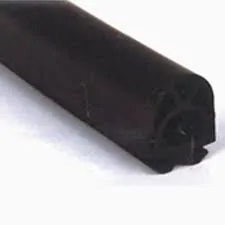High-Quality Rubber Seal Strips for Windows and Doors Installation
Dec . 03, 2024 20:20 Back to list
High-Quality Rubber Seal Strips for Windows and Doors Installation
The Importance of Window Rubber Seal Strips A Comprehensive Guide
When it comes to maintaining the integrity and comfort of our homes, often overlooked components such as window rubber seal strips play a crucial role. These small yet significant items are essential for enhancing energy efficiency, ensuring safety, and improving the overall aesthetics of your windows. In this article, we will delve into what window rubber seal strips are, their benefits, and why their proper installation is paramount.
What are Window Rubber Seal Strips?
Window rubber seal strips are flexible materials designed to fill the gap between the window frame and the glass pane. They are typically made of various types of rubber, including EPDM (Ethylene Propylene Diene Monomer) and silicone rubber, both known for their durability and resistance to weathering. These strips can come in different shapes and sizes, catering to various types of windows and installation needs.
Benefits of Using Window Rubber Seal Strips
1. Energy Efficiency One of the primary benefits of window rubber seal strips is their ability to create a tight seal. This prevents drafts and reduces the transfer of heat between the interior and exterior of your home. By minimizing air leaks, these seals can significantly lower heating and cooling costs, contributing to a more energy-efficient household.
2. Weather Resistance Exposure to harsh weather conditions can deteriorate window seals over time. Rubber seal strips provide a protective barrier against rain, snow, wind, and extreme temperatures. High-quality strips are designed to withstand UV rays, moisture, and temperature fluctuations, ensuring long-term performance and durability.
3. Noise Reduction Another significant advantage is their capacity to reduce noise intrusion. By sealing gaps and cracks, window rubber seal strips dampen external sounds from entering your home, creating a quieter and more peaceful living environment.
4. Preventing Water Infiltration Leaky windows can lead to water damage, mold growth, and other structural issues. Properly installed seal strips help prevent water from seeping into your home during heavy rain or snow, preserving the integrity of your windows and reducing maintenance costs.
5. Improved Home Aesthetics Beyond functionality, window rubber seal strips can enhance the visual appeal of your windows. Available in various colors and designs, they can complement the window frames and overall decor while providing a finished and polished look.
window rubber seal strip product

Installation and Maintenance
Installing window rubber seal strips is a relatively straightforward process that can save homeowners money on professional services. Here’s a quick guide on how to install them
1. Remove Old Seals Carefully take off any old or damaged seal strips using a utility knife or flathead screwdriver. Ensure the surfaces are clean and free of debris.
2. Clean the Surface Use a cleaning solution to wipe down the window frame and glass to ensure the new seal adheres well.
3. Measure and Cut Measure the length of the sections where the seal will be installed and cut the new rubber strips accordingly.
4. Apply the Seal Peel off the backing (if it’s self-adhesive) and press the new rubber strip firmly into place. For non-adhesive strips, use a suitable adhesive to secure them.
5. Check for Gaps After installation, inspect all areas to ensure there are no visible gaps. A tight seal will maximize the benefits.
Conclusion
Window rubber seal strips may seem like a minor detail, but they have a profound impact on the comfort, efficiency, and safety of your home. Regular maintenance and timely replacement can help prevent larger issues down the line, such as air leaks or water damage. By investing in high-quality window rubber seal strips and ensuring their proper installation, homeowners can enjoy a more energy-efficient, comfortable, and aesthetically pleasing living space. Whether you’re a DIY enthusiast or prefer professional help, understand the significance of these unassuming components, and make them a priority in your home maintenance routine.
-
LED Neon Rope Light Outdoor Companies: Durable & Bright Solutions
NewsAug.27,2025
-
Premium Window Seal Strip Adhesive: Manufacturers & Suppliers
NewsAug.26,2025
-
Best Window Seal Strip Adhesive Companies: Strong, Durable Seals
NewsAug.25,2025
-
Karcher A2004 Wet & Dry Vacuum Filter: Premium Replacement Cartridge
NewsAug.24,2025
-
Premium Vacuum Filter for Karcher VC 4, VC 6, VC 7 & Tineco A10, A11
NewsAug.23,2025
-
Hi-Flo HF155 Oil Filter KTM 250 EXC Racing 03-06 | OEM 580.38.005.000
NewsAug.22,2025
